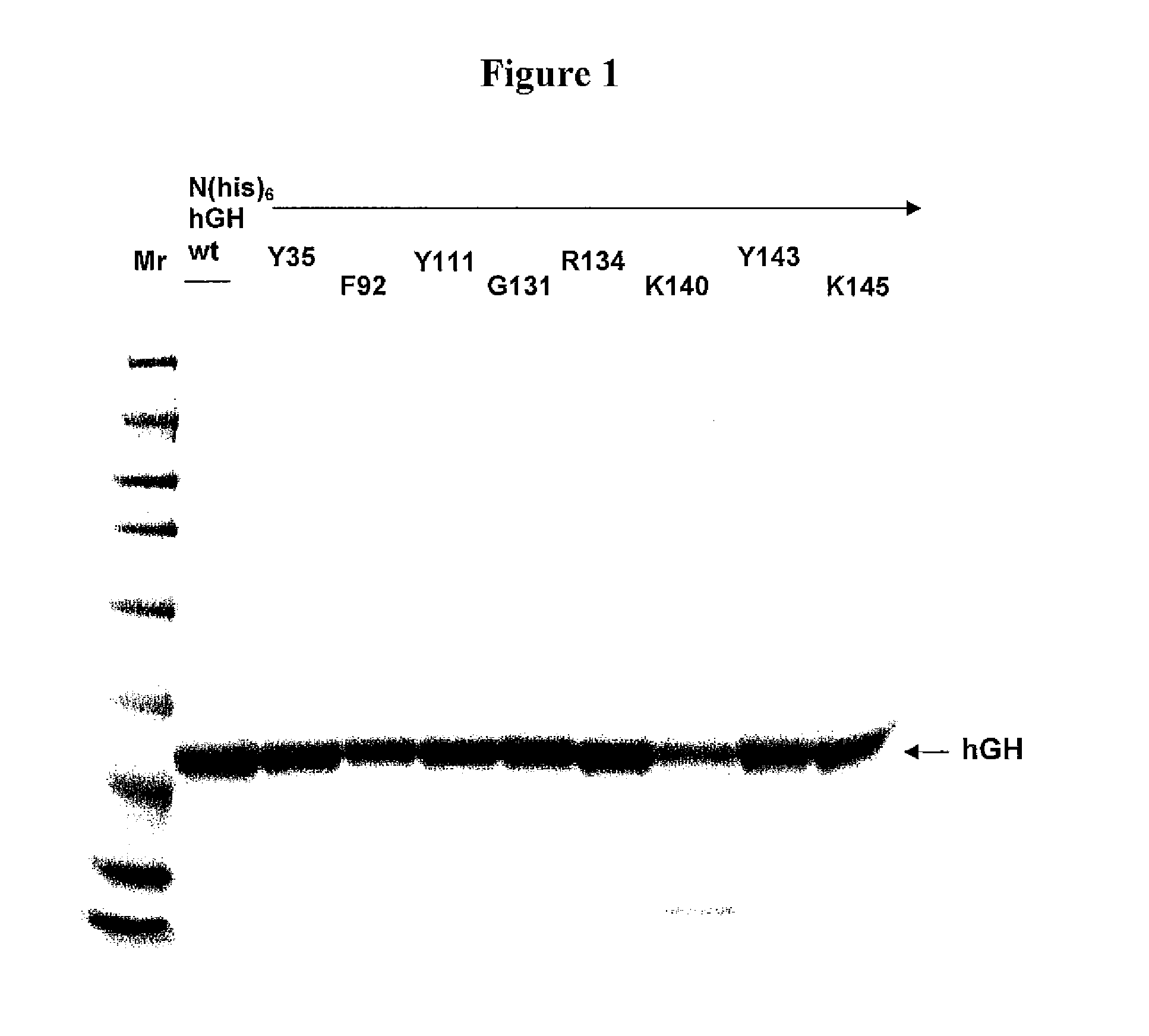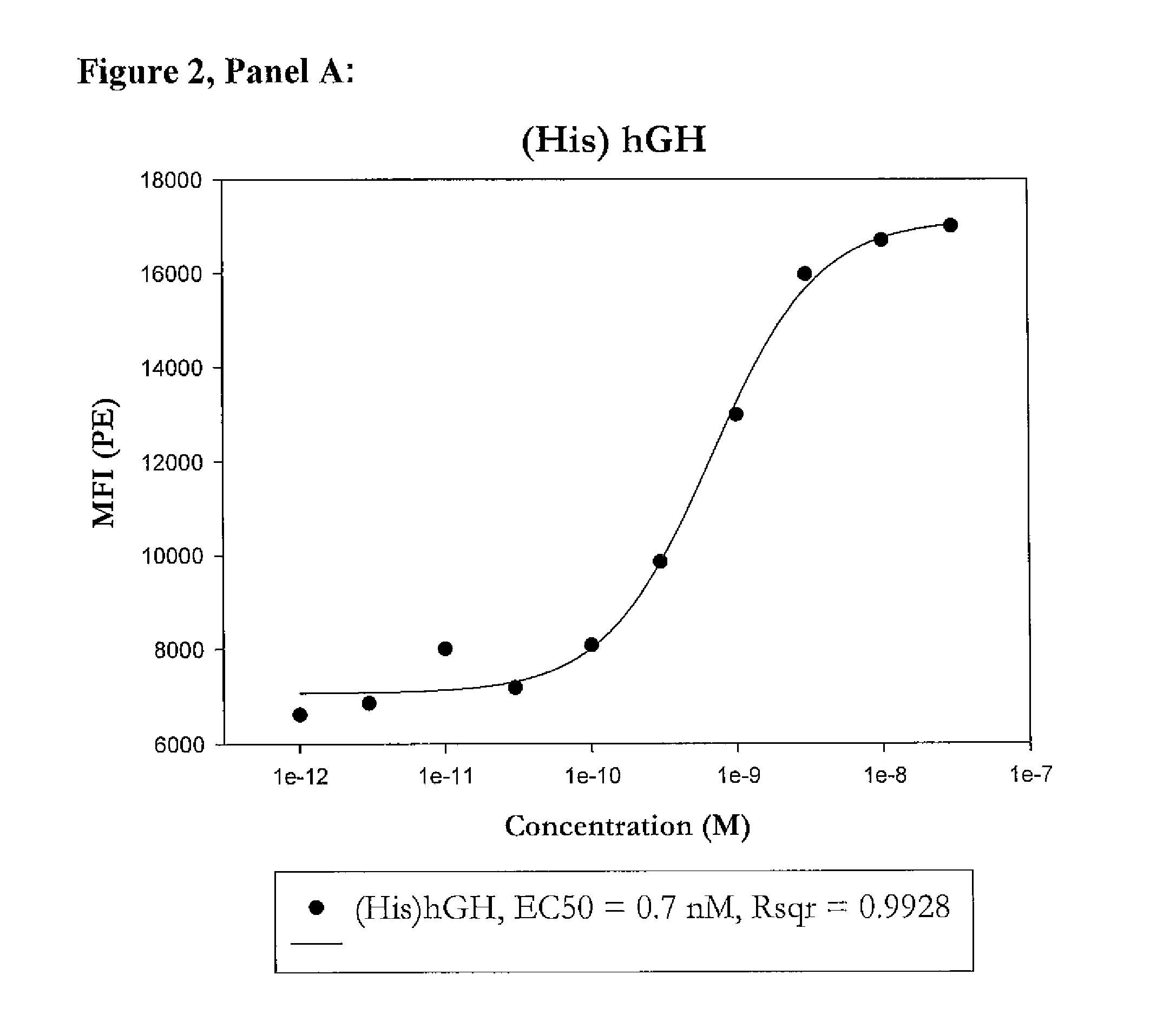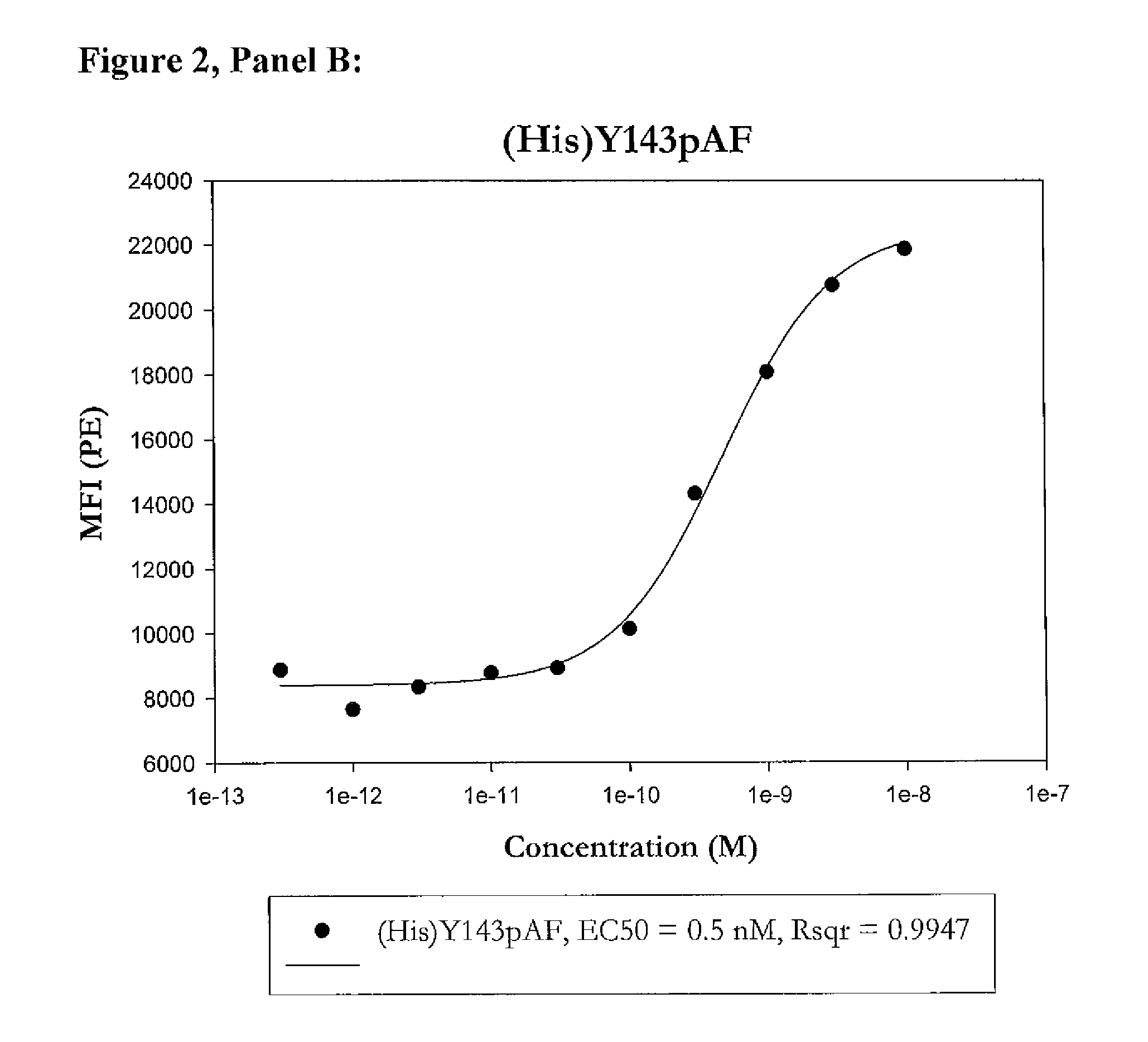Modified porcine somatotropin polypeptides and their uses
a technology of porcine somatotropin and polypeptides, which is applied in the direction of peptide/protein ingredients, growth hormones, drug compositions, etc., can solve the cost of each administration, and achieve the effect of complicating the expression, folding and stability of the resulting protein, and risking the activity of the bioactive molecule being targeted
- Summary
- Abstract
- Description
- Claims
- Application Information
AI Technical Summary
Benefits of technology
Problems solved by technology
Method used
Image
Examples
example 1
Site Selection for the Incorporation of Non-Naturally Encoded Amino Acids into pST
[0648]This example describes some of the many potential sets of criteria for the selection of sites of incorporation of non-naturally encoded amino acids into pST.
[0649]A crystal structure of porcine somatotropin is known and potential residues are selected for substitution include but are not limited to conservative substitution sites and residues with the greatest solvent accessibility using the Cx program (Pintar et al. (2002) Bioinformatics, 18(7):980-4). Conservative substitution sites identified for substitution with para-acetylphenylalanine include, but are not limited to, tyrosine, phenylalanine, and arginine residues that contain a hydrophobic core with or without charge. Residues that may be structurally relevant were not selected for substitution, including but not limited to, glycines, prolines, and residues involved in helical end capping. Residues in known receptor binding regions are als...
example 2
Cloning and Expression of a pST Polypeptide Containing a Non-Naturally Encoded Amino Acid and Produced in E. coli
[0654]This example details the cloning and expression of a pST polypeptide including a non-naturally encoded amino acid in E. coli and the methods to assess the biological activity of modified pST polypeptides.
[0655]Methods for cloning pST are known to those of ordinary skill in the art. Polypeptide and polynucleotide sequences for pST and cloning into host cells as well as purification are detailed in U.S. Pat. No. 5,849,883, which is incorporated by reference in its entirety herein, and Heidari et al. Veterinary Immunology and Immunopathology (2001) 81:45-57.
[0656]An introduced translation system that comprises an orthogonal tRNA (O-tRNA) and an orthogonal aminoacyl tRNA synthetase (O-RS) is used to express pST containing a non-naturally encoded amino acid. The O-RS preferentially aminoacylates the O-tRNA with a non-naturally encoded amino acid. In turn the translation...
example 3
[0672]The E9 RS can be used to charge the pST tRNA with pAF at the amber codon, and the E9 RS can also be used to charge the pST tRNA with pAF3 (for pAF3 see, for example, the figures) at the amber codon. After pAF3 incorporation, pAF3 can be converted to pAF2 under reducing conditions. pAF3 is converted to pAF2, in this example prior to refolding, and the conversion allows for reductive alkylation-based PEGylation. This was conducted with pST and the pAF3 to pAF2 reduction was evaluated at three (3) steps including the inclusion body wash, pre-PEGylation, and solubilization. At the inclusion body wash step, varying concentrations of DTT to IB wash buffers were added. Various concentrations up to 20 mM DTT were used in the final wash buffer. Reduction levels were around 90%. At the pre-PEGylation step, incubation was at 4° C. and 0.1 mM-0.5 mM DTT concentrations were used. High levels of reduction were seen after 0 / N incubation with 0.2 mM DTT, 95% and greater. At the solubilization...
PUM
| Property | Measurement | Unit |
|---|---|---|
| molecular weight | aaaaa | aaaaa |
| molecular weight | aaaaa | aaaaa |
| molecular weight | aaaaa | aaaaa |
Abstract
Description
Claims
Application Information
 Login to View More
Login to View More - R&D
- Intellectual Property
- Life Sciences
- Materials
- Tech Scout
- Unparalleled Data Quality
- Higher Quality Content
- 60% Fewer Hallucinations
Browse by: Latest US Patents, China's latest patents, Technical Efficacy Thesaurus, Application Domain, Technology Topic, Popular Technical Reports.
© 2025 PatSnap. All rights reserved.Legal|Privacy policy|Modern Slavery Act Transparency Statement|Sitemap|About US| Contact US: help@patsnap.com



